To celebrate Lambeth Heritage Festival the London Fire Brigade Museum is exploring the history of Lambeth River Station. London Fire Brigade has a close connection with the borough of Lambeth - from the Albert Embankment Fire of 1918, to the headquarters and workshops being located there from 1937 until 2008. Lambeth is currently home to four fire stations and Lambeth River Station.
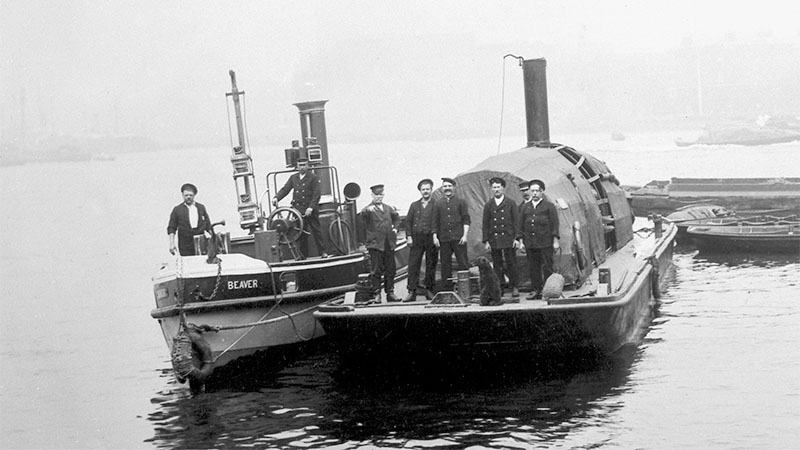
Fire boats were first used in London as early as the 1700s. They would have been rowed along the river to an incident. It was not until the establishment of the fire brigade as a public service in 1866 that river stations were set up. These stations were equipped with tugs towing steam engines mounted onto barges.
The Brigade had two floating fire stations at Southwark Bridge and Rotherhithe. Within a few years this had increased to four, one for each district at Millbank, Southwark Bridge, Limehouse Reach and Rotherhithe.
In 1896 Captain Lionel de Latour Wells became Chief Officer and modernised the river service in London because of improved water supplies on land. As part of the changes four new boats were introduced, specially designed for river work. They replaced the old tugs and barges that had been used previously.

The first self-propelled fire-float, Alpha II, was introduced into service in 1900. The vessel had a very shallow draught, which meant that it could operate close to the shore and at low tide.
By 1913 three other boats of the same class were in use at Blackfriars, Battersea and Rotherhithe river stations. In the 1930s the river service became known as the fire fleet.
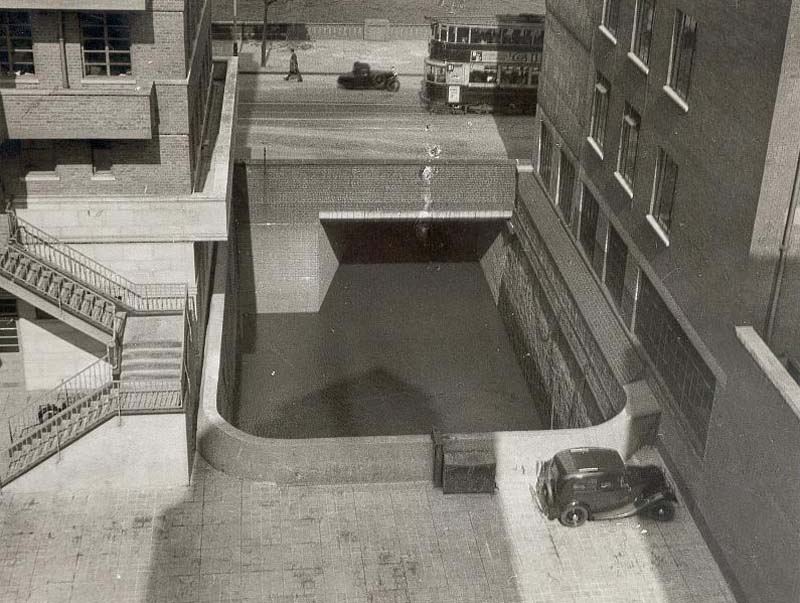
In 1937 London Fire Brigade’s new headquarters were opened in Lambeth. The original plans for the headquarters included a fire boat dock. The aim was to bring in fire boats from the river and if necessary, the dock could be drained to allow repairs to be carried out.
However, as London prepared for war, the plans were changed at the last moment. The excavated dock was covered and became part of a bombproof underground control room which played an instrumental part in LFB’s war effort.
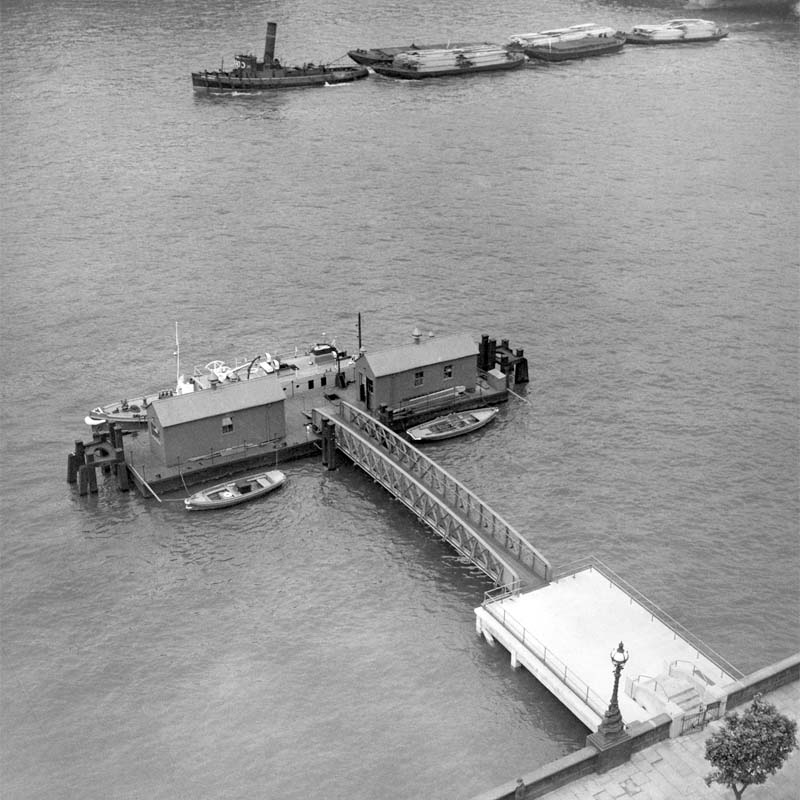
The new Lambeth Headquarters included a floating station for the Brigade’s fire boat. When the station was opened it consisted of two huts on a pontoon, a platform supported by floats. The crews would eat their meals and sleep on land at Lambeth Fire Station.
When the Charing Cross float repair depot was closed on 2 October 1936, the pontoon from the depot was adapted for use as a pier at Lambeth River Station. All fire boat repairs and maintenance were then carried out by marine engineers at the new Lambeth Workshops which was part of the headquarters complex.
Image from Massey Shaw Education Trust
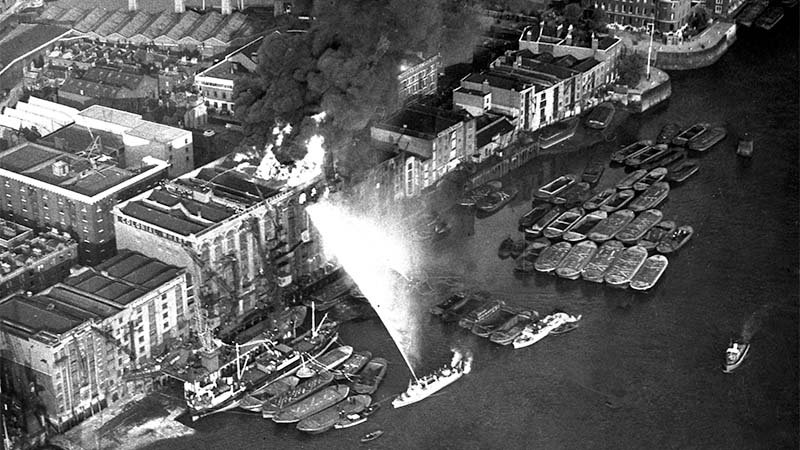
With the opening of the Lambeth River Station, Battersea River Station was also closed. The Massey Shaw fire boat, named after the first Chief Officer, Captain Sir Eyre Massey Shaw was moved to Lambeth and served in the Brigade from 1935 until 1971. She was the most powerful London fireboat to enter service, being capable of delivering up to 13,500 litres of water per minute. This rate of flow was strong enough to punch through a brick wall.
The Massey Shaw also went to Dunkirk during the evacuation of Allied Forces as part of Operation Dynamo. She rescued many soldiers from France before being welcomed home at Lambeth River Station.
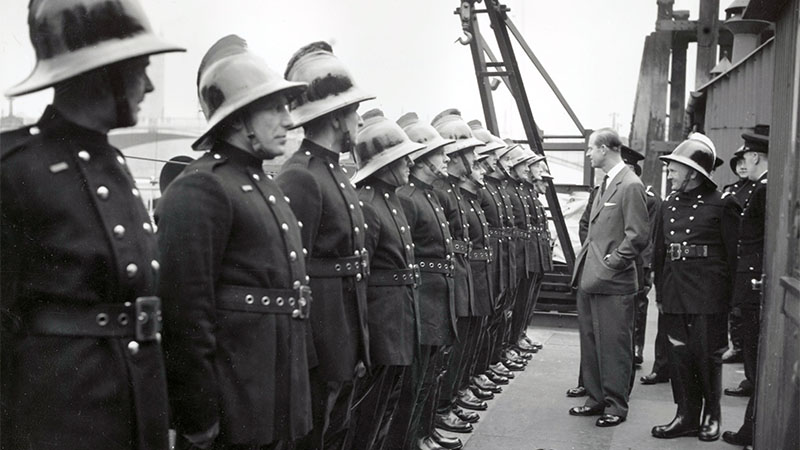
After the war the river fleet was greatly reduced. This was influenced by many factors including the decline of trade along the river, which reduced the risk of fires. A new danger was encountered as the river became increasingly used for recreational activities. This influenced the type of fire boat being used, with them becoming much smaller and faster in order to provide a rescue service rather than being used solely to pump water.
Image from Massey Shaw Education Trust
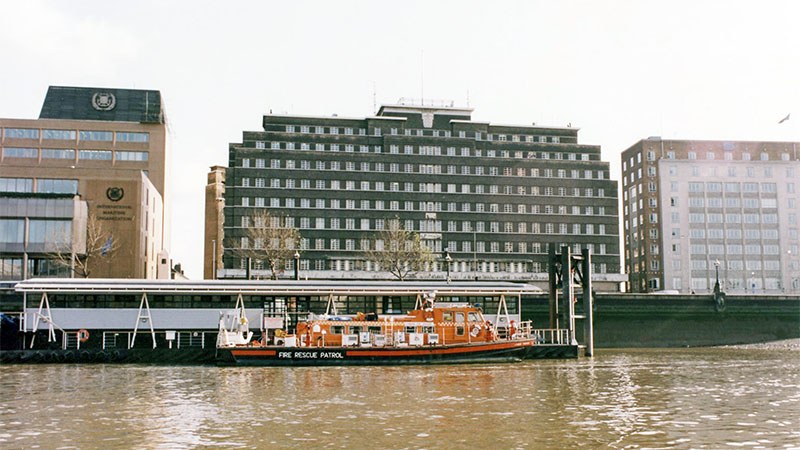
By the 1980s Lambeth was the only river station in operation and the station received a new fire boat, London Phoenix. She was a catamaran fire boat. It was built by Fairey Marine of Cowes, on the Isle of Wight. London Phoenix was equipped for both conventional firefighting and also for fires involving oil, for which she was fitted with a substantial foam making capacity. The current station was built in 1991, with a new purpose-built pontoon to replace the older structure and was able to accommodate crews with facilities for sleeping, offices and a mess room for meals.
London Phoenix was retired in 1999 and Fire Dart and Fire Flash entered service. These were designed to attend a wide range of emergencies along the river. They are also capable of responding to other lifesaving tasks on the river. With one of the fire boats on immediate standby, the second is held in reserve and used for training.
Learn about the new boats
The Brigade has recently commissioned its new generation of fire boat. The boats are named after important figures in the Brigade’s history, Harry Errington and Gillian Wilton-Clark (née Tanner) who were both awarded medals for their heroic actions during the Second World War. The boats will be stationed at Lambeth River Station and will replace Fire Dart and Fire Flash.
This exhibition was made possible with the help of the Massey Shaw Education Trust and our LFB Museum volunteers
Please complete our survey to let us know what you thought of the exhibition, and more importantly what you’d like to see from the museum in the future.